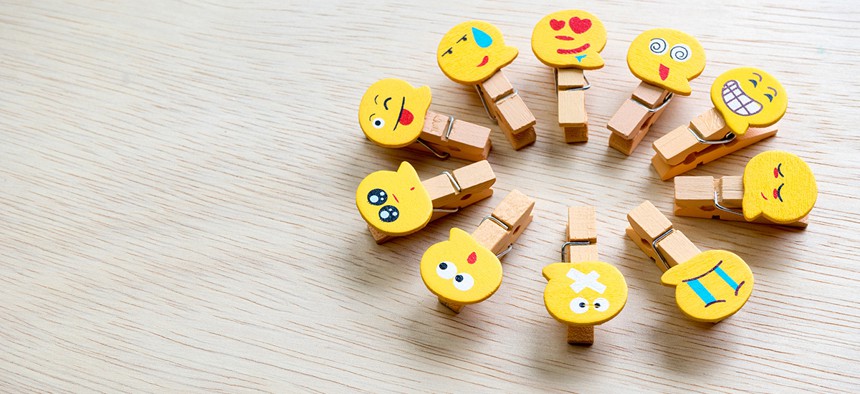Tracking the World's Emotions, in Real-Time

N Azlin Sha/Shutterstock.com
A new app is collecting data to create a snapshot of global mental health.
People’s everyday emotions can be tough to pin down, partly because they’re not often given a lot of thought. But a new app is hoping to change that, and produce a snapshot of the whole world’s emotional state in the process.
Through Oct. 16, Spur Projects, a suicide-prevention organization, collected data on people’s daily moods via an app called How Is the World Feeling? Launched Oct. 10 to coincide with World Mental Health Day, the project aimed to aggregate the emotions of around 7 million people over the course of a week, providing real-time mood updates from around the globe.
Users were asked to select from a pool of six possible emotions—happy, sad, angry, anxious, powerful, or peaceful—and choose the one that describes them best in that moment.
Last week, after telling the app I was in a relatively happy mood while working at my desk and surrounded by people, How Is the World Feeling? informed me I wasn’t alone: around 7,000 people also registered happiness; around 9,000 clocked in as peaceful, and around 6,000 reported anxiety.
An interactive map showed the current distribution of emotions across the globe. Most data points are clustered in the U.S., Europe and Australia, but smaller countries are represented, too: A red dot in Lebanon denotes anger there; a yellow dot signifies a happy response from Laos.
The aim of the app, according to its website, is to normalize “the extremely broad range of emotions that are experienced every second of every day.” How Is the World Feeling? sets about this in two ways: by encouraging participants to regularly check in with themselves and learn to assess their own moods, and by situating how they’re feeling in relation to others.
The global suicide rate hovers around 800,000 deaths per year, claiming more lives than many major diseases. Earlier this year, the World Health Organization and the World Bank convened doctors, aid groups and governments in an effort to move mental health to the forefront of the global agenda.
Cities like New York have piloted awareness campaigns and bolstered resources at the community level. But the project organizers note while there have been increased policy efforts over the past several years, “there’s still a long way to go before mental health conversations are the norm.”
While the data collected through the app are not ground-breakingly insightful—the questions and categories are topline and meant to be answered in a matter of seconds—they still provide useful, time-stamped aggregates that can be accessed by individuals and organizations alike, Lee Crockford, the project’s cofounder, told GOOD. The app can ascertain trends, like the time of day that anxiety peaks, or when people are most relaxed; those insights could, Crockford added, prove useful to companies hoping to create environments more responsive to employees’ needs.
But beyond its utility as an open-source data trove, the app is meant as a self-care tool. Throughout the day, it sends sends occasional prompts, reminding users to check in with their emotions—not unlike the box that pops up on a computer screen with instructions to take a walk or stretch.
At the end of a check-in, users can access resources and tools, like support hotlines and increasingly trendy mindfulness apps, which offer a deeper dive into the sort of reflective state How Is the World Feeling? hopes to foster.
Though the data-collection project last only a week, the organizers hope users will continue to track their emotions via the app, continuing the conversation and boosting awareness across the globe.





